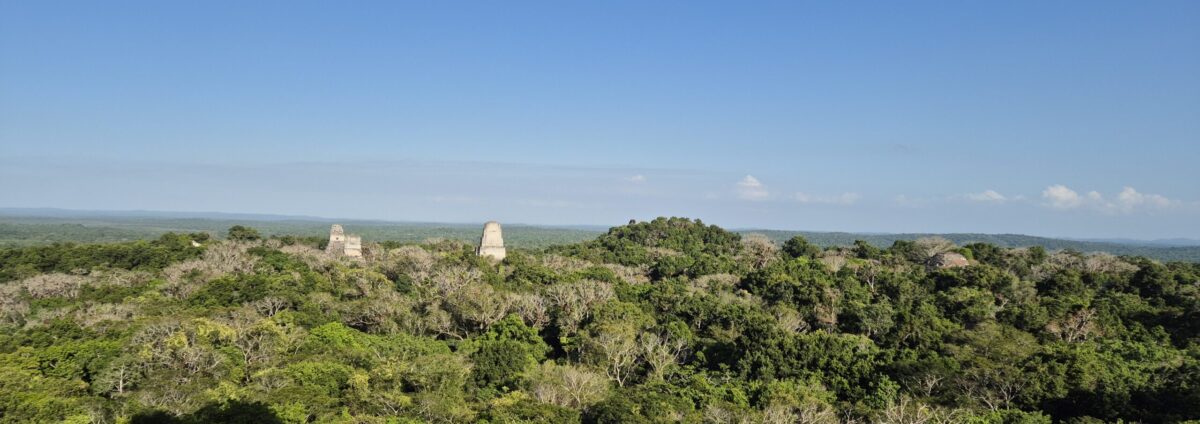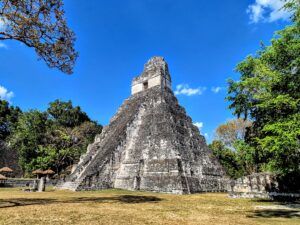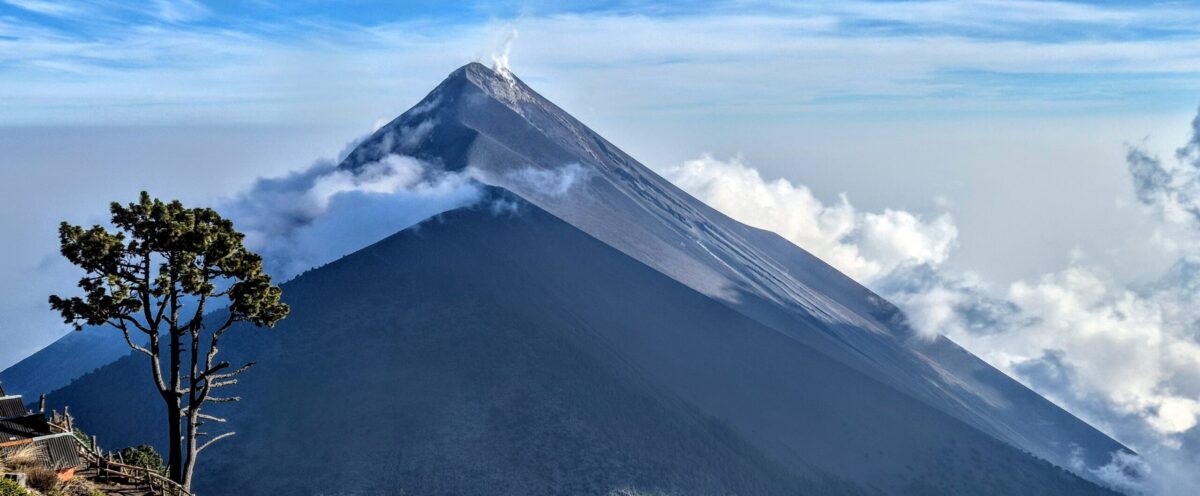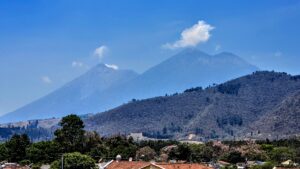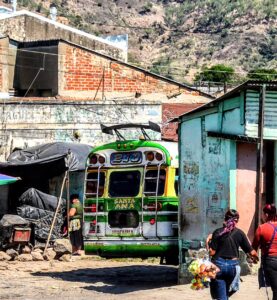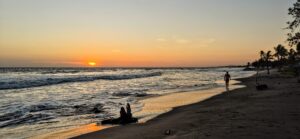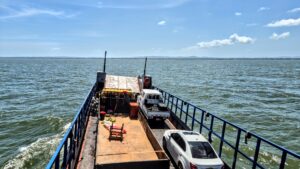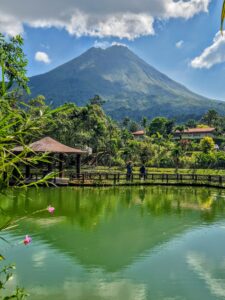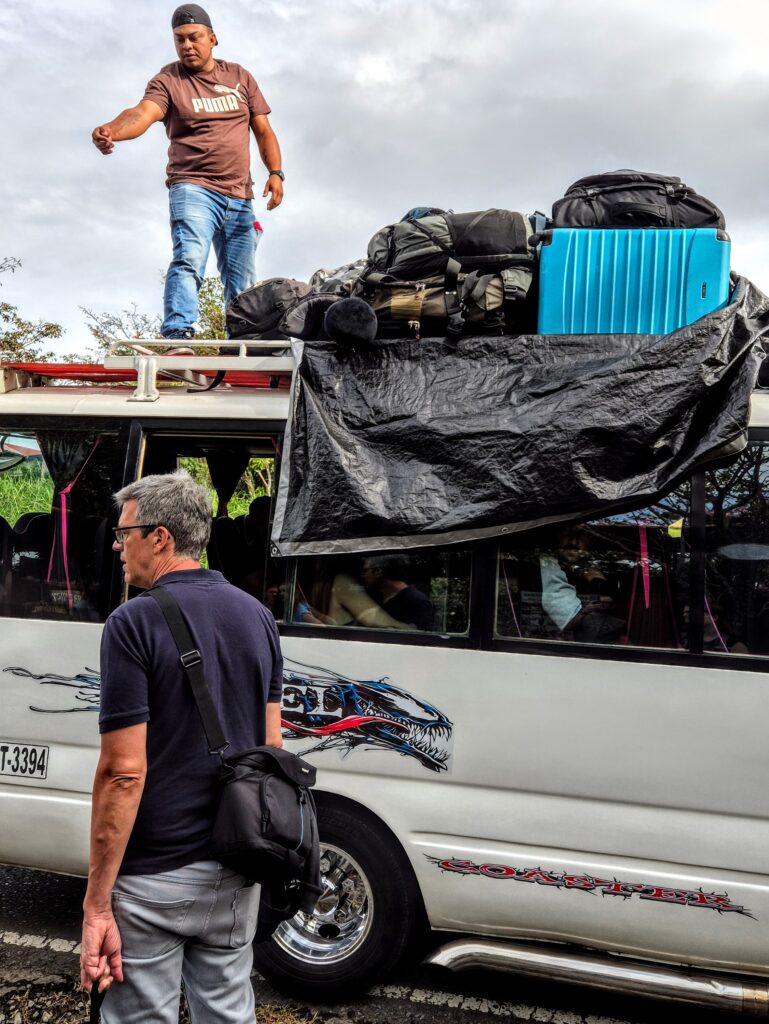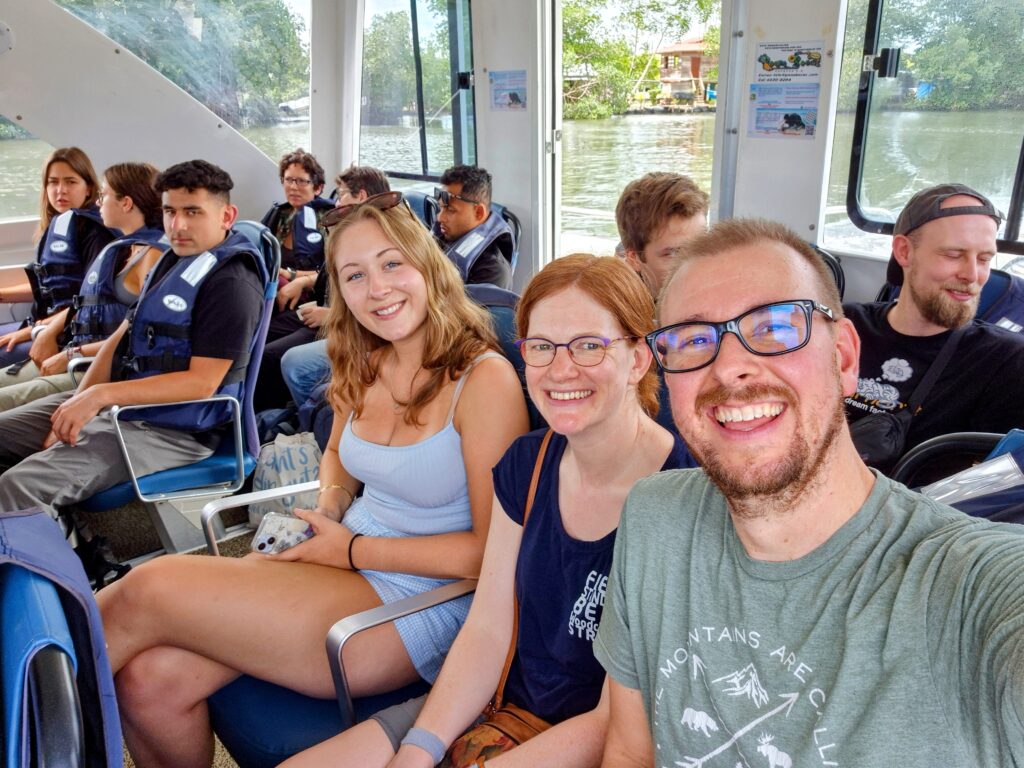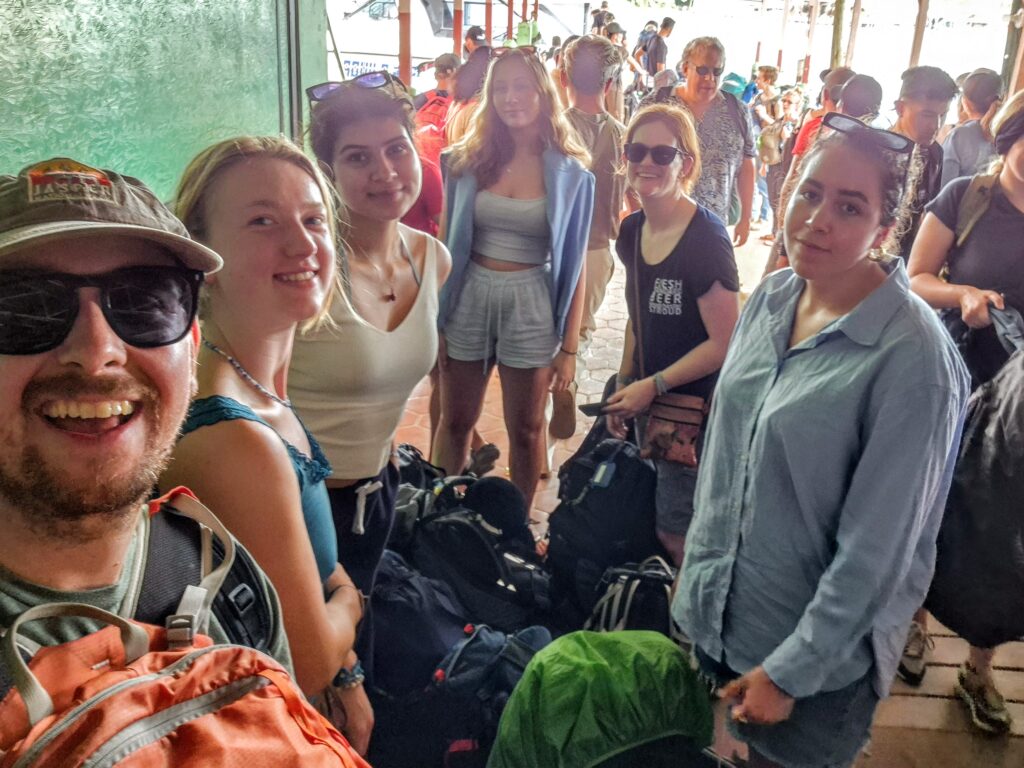We’d originally planned to get to Flores via Semuc Champey (roughly halfway overland) however, as we were nearing the end of our trip, spending more time in Atitlan than originally planned meant that we needed to go straight there. It’s amazing how three months disappears! Flores was another must-do for us, it’s the nearest big town to access the Mayan ruins of Tikal.
Guatemala is a large country, and Flores is up in the top corner, this meant either a 10+ hour shuttle or a flight. Our experience of Guatemalan shuttles so far has been that while they get you to your destination far more quickly than the local buses, they are not nearly as comfortable as any of the long distance buses we took in South America. The idea of a long (possibly overnight) trip on a minibus really didn’t appeal, so we decided to book our first flight since landing in Panama!
The flight wasn’t going to be a magic shortcut however, as we we still in Lake Atitlan, so the journey would start with a boat ride from Santa Cruz la Laguna, to a short (3 hour) shuttle from Panajachel that would take us directly to the airport in Guatemala city.
On the day everything went to plan. In fact, it went so well that we got to the airport before midday for an 18:30 flight. The airport at Guatemala city isn’t huge so we just had to find some seats and wait until check-in opened at 16:30. We’d brought sandwiches made with the last of the excellent bread, cheese, and hummus that we’d found in San Marcos and took advantage of the free WiFi to edit the blog. We had planned to check in, and dump our bags then grab an early dinner airside while we waited for the flight, however after we went through security we realised that we were in the domestic area consisting only of seating and a single, broken vending machine.
Luckily we always have some snacks on us, so we ate the last of our snacks before boarding. Soon enough we were touching down at Aeropuerto Mundo Maya Internacional. We’d booked a few nights at the Saragüate Eco hostal and the owner Ivan had come to collect us in his old Mercedes.
Continue reading “Tikal – Mayan temples and a lakeside home away from home”
